A biomass cogeneration plant (BMHKW) and a biomass power plant (BMKW) use the same or similar processes to generate electrical energy by burning solid biomass. A biomass CHP plant also provides heat, which can be used as district heating or local heating or as process heat. In the case of pure heat supply, this is referred to as a biomass heating plant (BMHW).
The raw material used is solid fuel (biogenic solid fuel) such as wood processing residues, forest wood not suitable for use as timber, straw and waste wood. A wood (heating) power plant (H(H)KW) is a biomass (heating) power plant powered by wood.
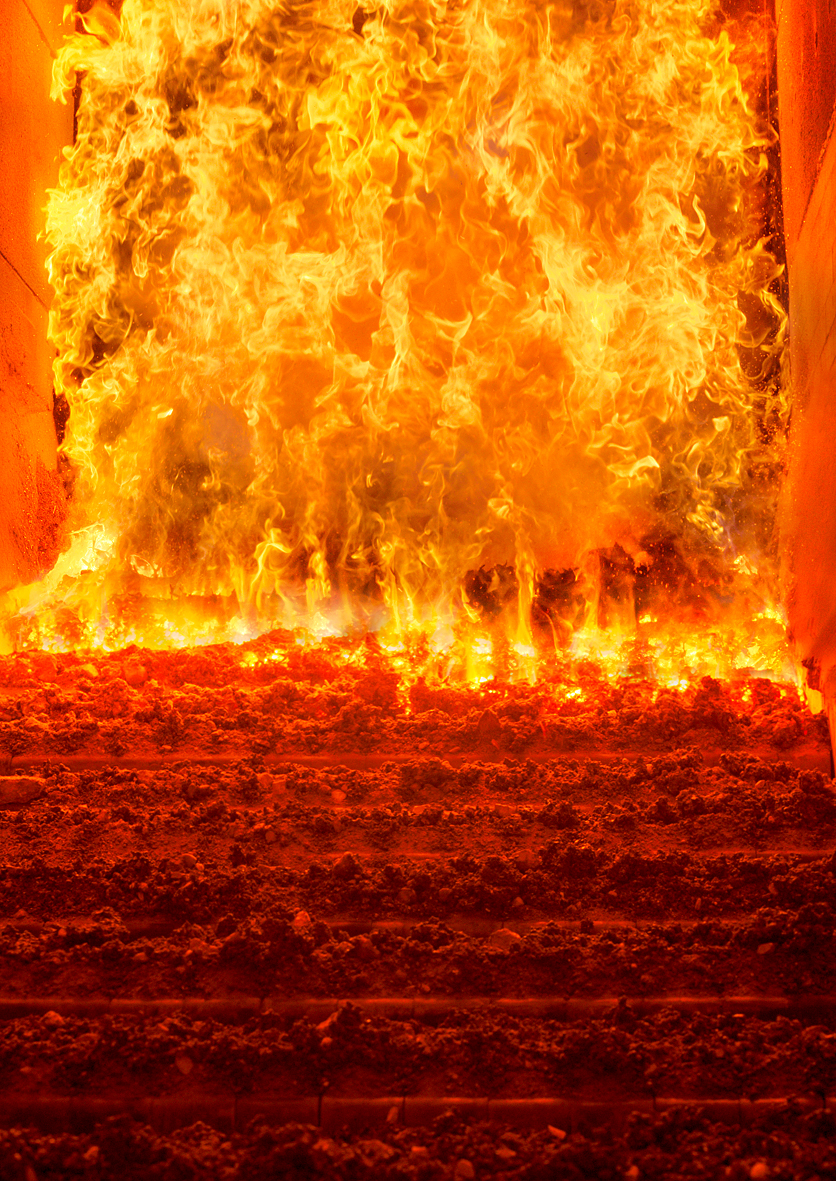
Firebox in partial load operation - stair grate (Gammel Engineering)
Plant technology
Biomass cogeneration plants use various processes to generate electricity and heat. Important plant types include biomass steam power plants, ORC plants and thermal biomass gasification plants as well as the Kombi Power System developed by Gammel Engineering.
Biomass steam power plants
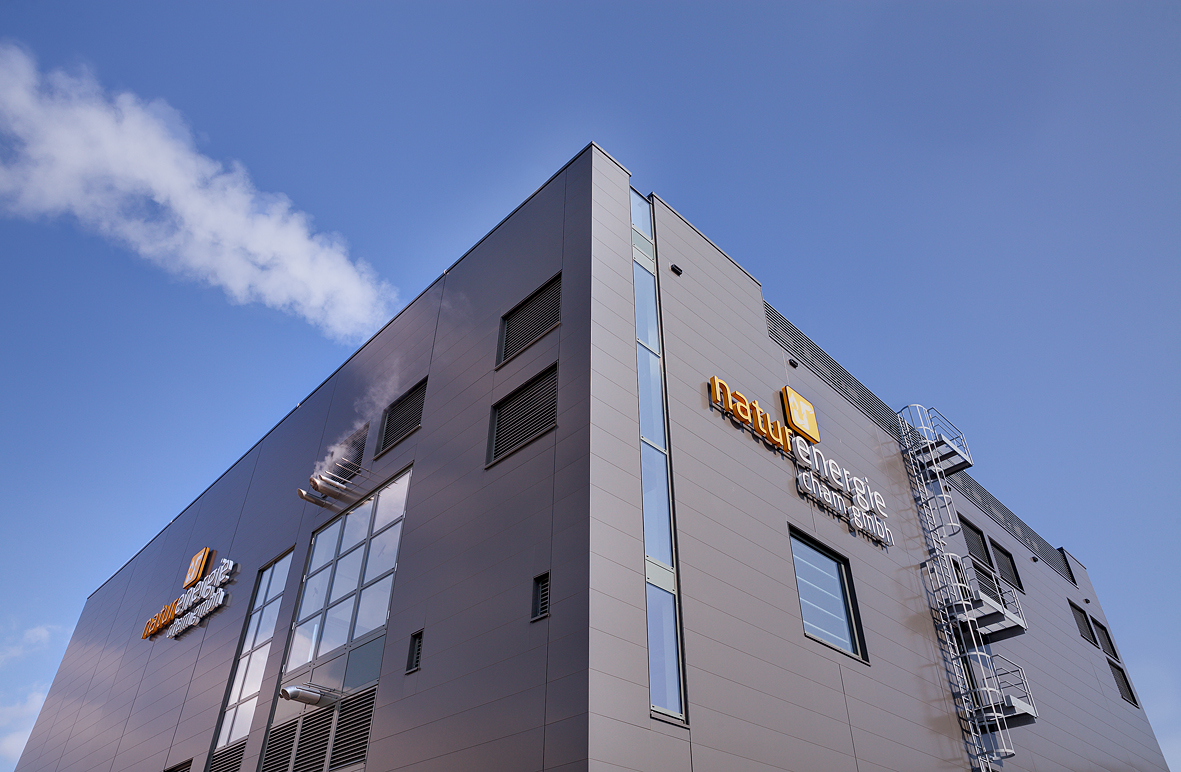
Natural energy Cham (Gammel Engineering)
The fuel is burned in a steam boiler adapted to the fuel. Most systems work with grate firing, larger systems also use the fluidized bed process. In the grate boiler, the fuel is dried on a usually mechanically driven grate over various zones, then ignited and burned.
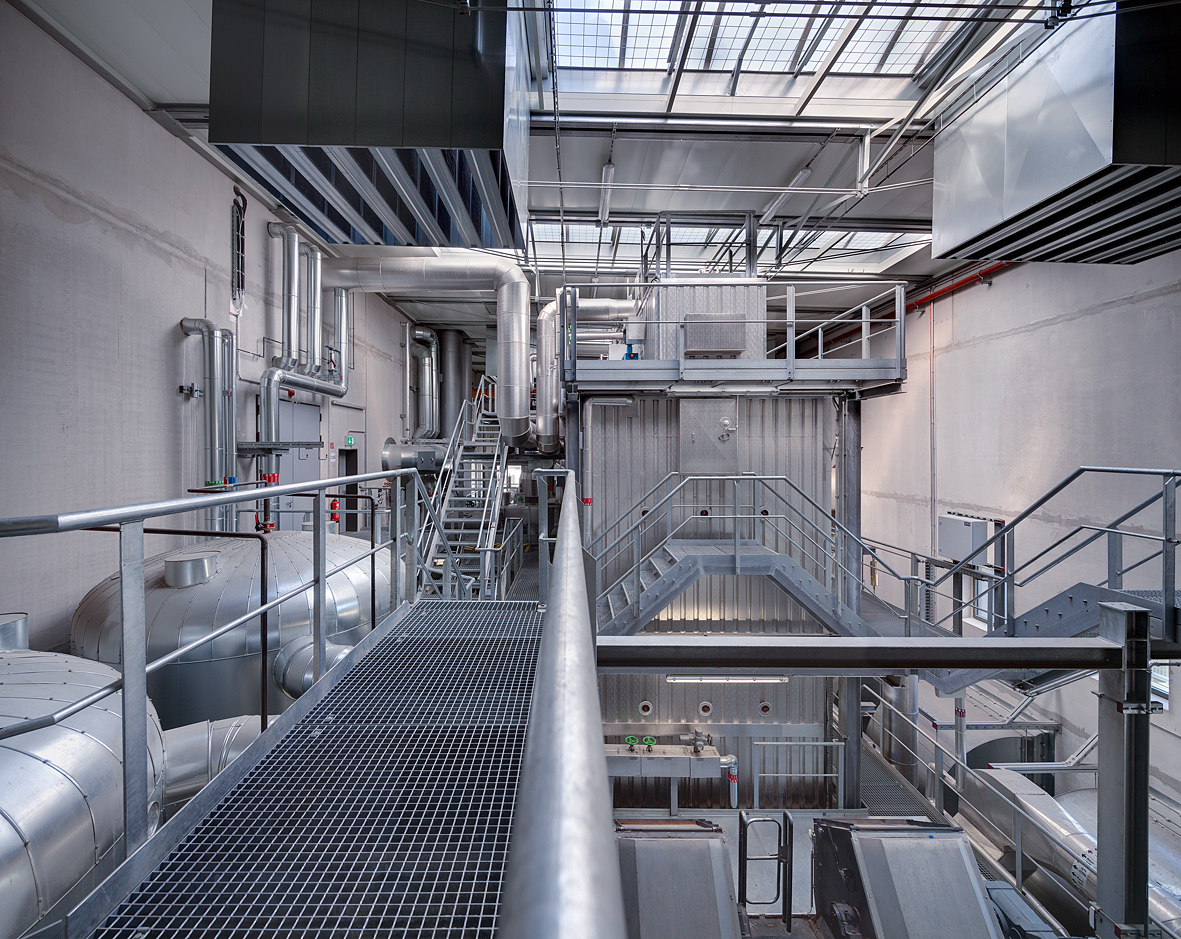
Naturenergie Cham - Biomass steam boiler (Gammel Engineering)
In a fluidized bed boiler, the fuel is fed directly into the combustion chamber. The lighter components burn in flight, while the heavier ones fall down into a fluidizing medium, usually sand, which homogenizes the combustion and keeps the fuel in suspension. Air is injected into the bottom of the boiler to swirl the fuel-sand mixture and fluidize it. In both processes, the resulting hot flue gas is passed through boiler passes, which have water-cooled membrane walls in larger systems. In the area of flame formation and high radiation exposure, the walls are lined with a refractory lining to reduce the thermal and chemical load on the walls. Pipe coils are installed in the downstream flue gas passes, which are connected as evaporator, superheater and economizer surfaces. The superheated steam is fed to a turbine to generate electricity and is then usually also used as district heating or local heating. If necessary, the last economizer areas are still intended for direct heat extraction. The flue gas is cleaned in a flue gas cleaning system and emitted via a chimney.
Organic Rankine Cycle Plants
Schwendi combined heat and power plant (Gammel Engineering)
Project film http://www.gammel.de/de/uber-uns/filme/orc-heizkraftwerk
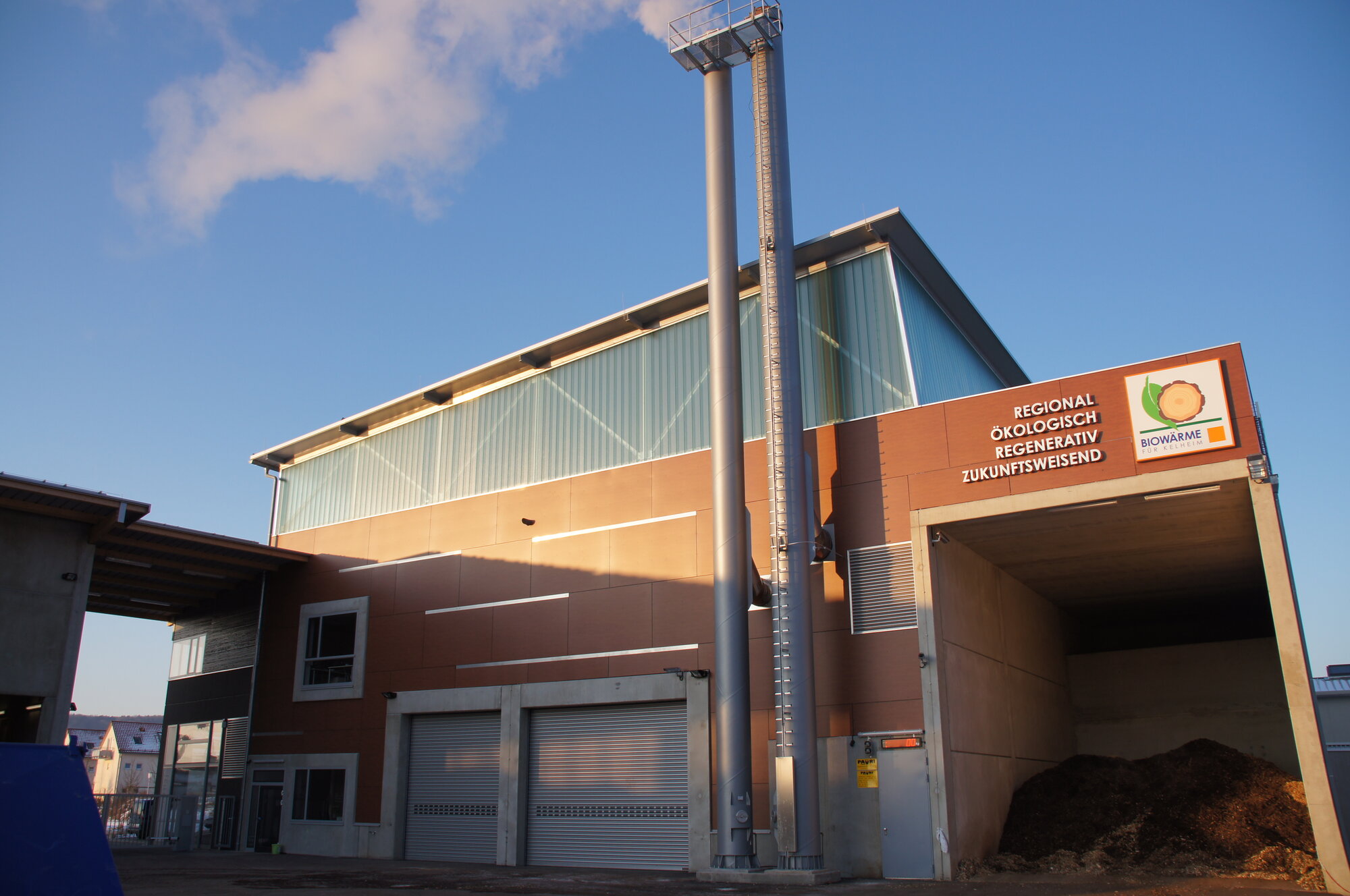
Bioenergy Kelheim (Gammel Engineering)
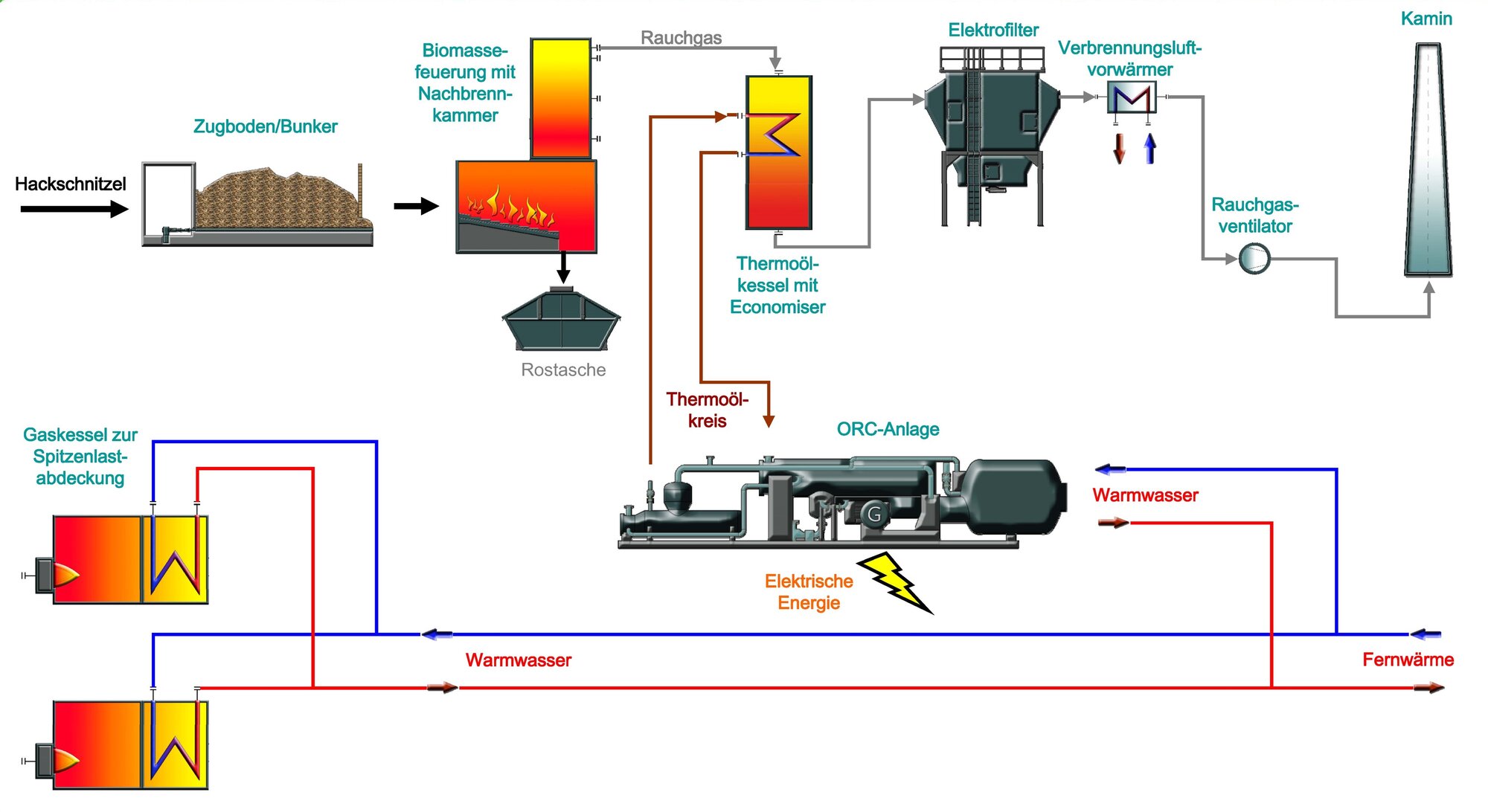
Simplified process flow diagram of a biomass ORC process (Gammel Engineering)
In biomass ORC plants, a heat exchanger with thermal oil in the pipes is usually used, which is fed with hot flue gases from a biomass-fired furnace.
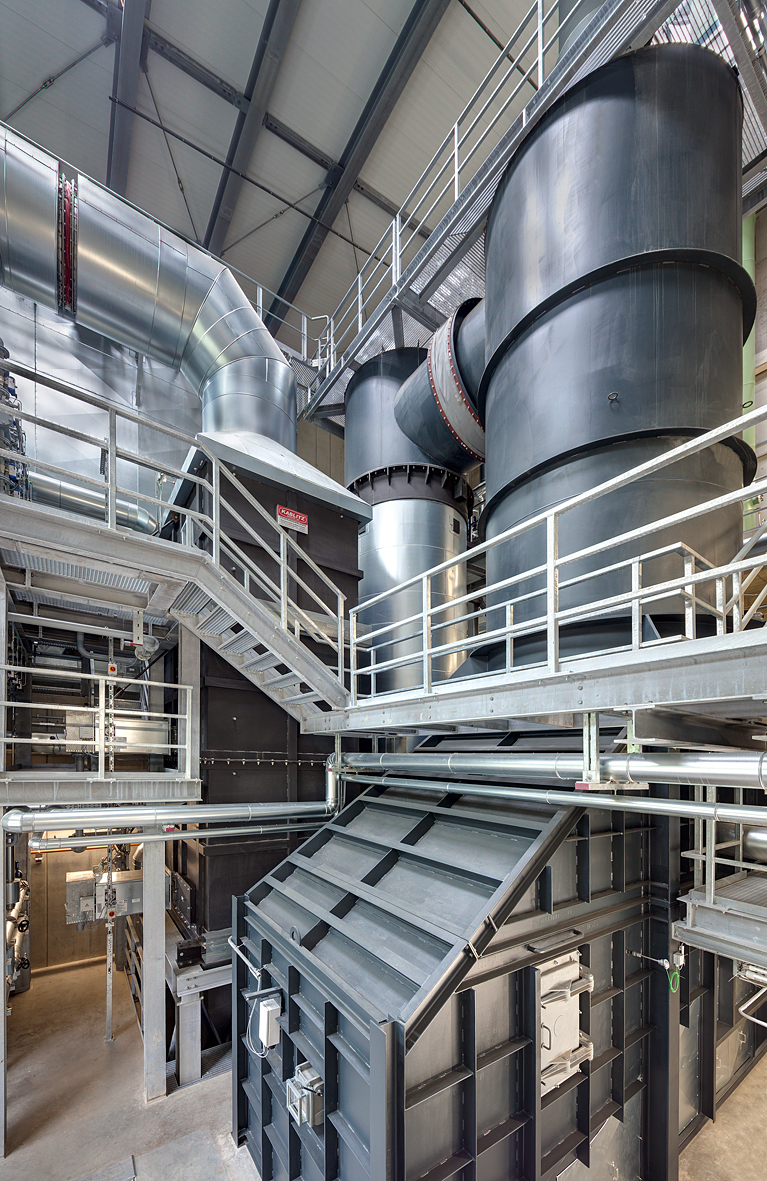
Firebox with afterburner chamber and waste heat radiation section (Gammel Engineering)
The heat transfer oil (thermal oil) is heated to approx. 320 to a maximum of 350 °C and heats the silicone oil evaporator - this evaporates at approx. 240 °C.
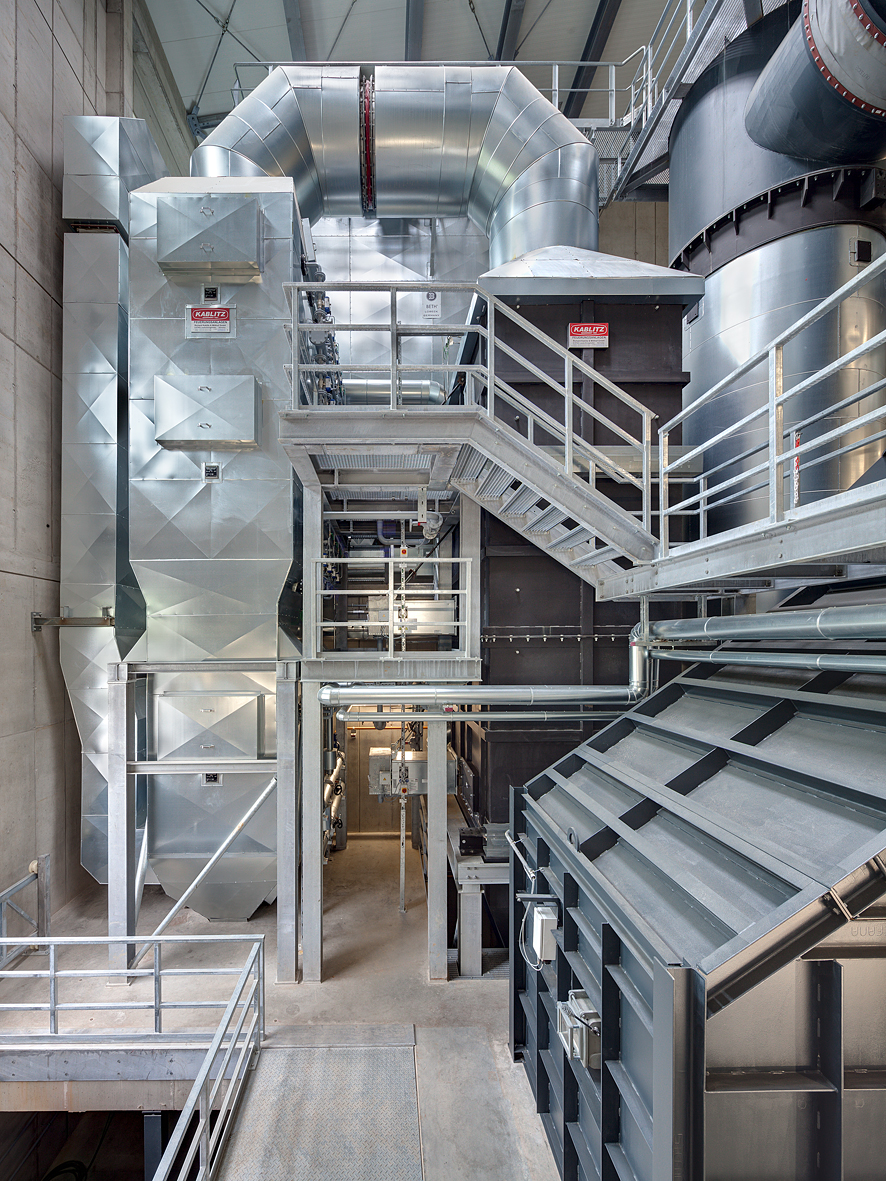
Thermal oil waste heat boiler : radiant part, convection part, economizer (Gammel Engineering)
In the Rankine process, the gaseous fluid is fed to the turbine and the expanded organic oil (usually silicone oil) condenses in the downstream - usually water-cooled - condenser. The working medium is therefore not water, but organic compounds that vaporize at lower pressures, and overheating can usually be dispensed with. After heat transfer to the thermal oil, the flue gas is usually still over 250 °C hot and can therefore be preheated in a second, downstream heat exchanger, the recuperator, to increase the electrical efficiency.
Thermal biomass gasifiers
In this process, biomass is gasified by pyrolysis. The exhaust gas is pre-cleaned while hot, then cooled, filtered and washed in a scrubber. It is then usually converted into electricity using a gas engine.
As a consistent further development in terms of electrical efficiency, the reduction of emissions, modularity and the controllability of the systems according to the heat requirement, Gammel Engineering has also developed the Kombi Power System for the use of natural biomass and implemented it several times in different system sizes.
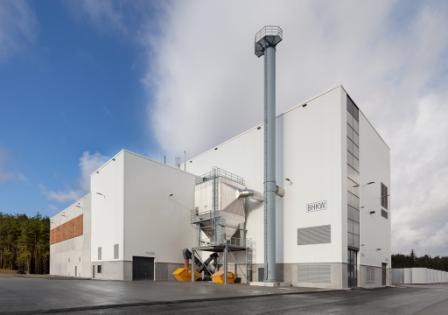
Biomass cogeneration plant from the Bögl company in Sengental (Gammel Engineering)
Source : Wikipedia http://de.wikipedia.org/wiki/Biomasseheizkraftwerk